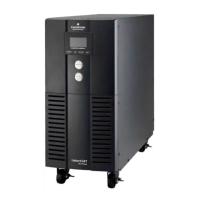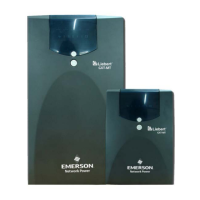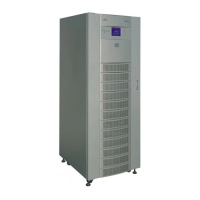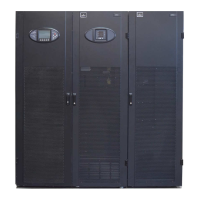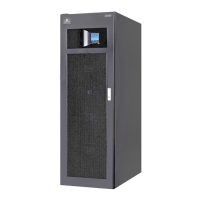54 Chapter 7 Maintenance
Liebert
®
ITA 16kVA And 20kVA UPS User Manual
Chapter 7 Maintenance
This chapter focuses on the UPS maintenance, including the fan maintenance, battery maintenance, UPS cleaning,
UPS state check, UPS function check.
7.1 Fan Maintenance
The UPS fans are expected to run for 20000 hours ~ 40000 hours continuously. The higher the ambient temperature,
the shorter the fan life is.
During the UPS operation, please verify the fan status once every half year by confirming that air blows out from the
ventilation holes on the rear panel.
7.2 Battery Maintenance
Note
1. Never reverse-connect the battery, otherwise the fire will occure.
2. Never open the battery to prevent physical injury because of the electrolyte. If you accidentally touch the electrolyte, wash the
area immediately with plenty of clean water and go to hospital.
The internal battery module of the UPS is sealed, lead-acid, maintenance-free battery. The battery life depends on
the ambient temperature, charge and discharge times. High ambient temperature and deep discharge shortens the
battery life.
To ensure the battery life, it is required to:
Keep the ambient temperature ranging from 15°C to 25°C.
Prevent small current discharge. Continuous battery operation time exceeding 24 hours is strictly prohibited.
Charge the battery for at least 12 hours, if the battery hasn't been charged for three months at specified ambient
temperature, or two months at high ambient temperature.
Note
1. Check regularly the screws at the battery connection parts, fasten it immediately if not tight.
2. Make sure that the safety equipment are complete and that the function is normal, especially that the settings of the battery
management parameters are normal.
3. Measure and record the internal temperature of the battery room.
4. Check whether the battery ports are damaged or hot, and whether the chassises and the covers are damaged.
If liquid leakage and damage to the battery are found, place the battery in the anti-vitriol tank, and deal with it
according to the local regulations.
The waste lead-acid battery is dangerous waste material. It is one of the national emphases to control the waste
battery pollution. Its storage, transportation, usage and disposal must follow the national and local law and other
criterions about the dangerous waste material and the waste battery pollution prevention.
According to the related regulations, recycle the waste lead-aid battery, and other disposal methods are prohibited.
Throwing away randomly the waste lead-aid battery and other improper disposal methods can result in serious
environment pollution, which will be investigated the legal responsibility.
As the provider of the lead-acid battery, Emerson has built perfect service network and recycle system for the waste
battery to assist users to deal with the waste battery by law. Contact Emerson or the nearest service center for the
detailed information of the recycle system about the waste battery.
Emerson is not liable for the environment results caused by failure to comply with the notices in this section or to use
the waste battery recycle system provided by Emerson.
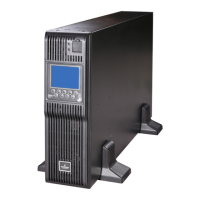
